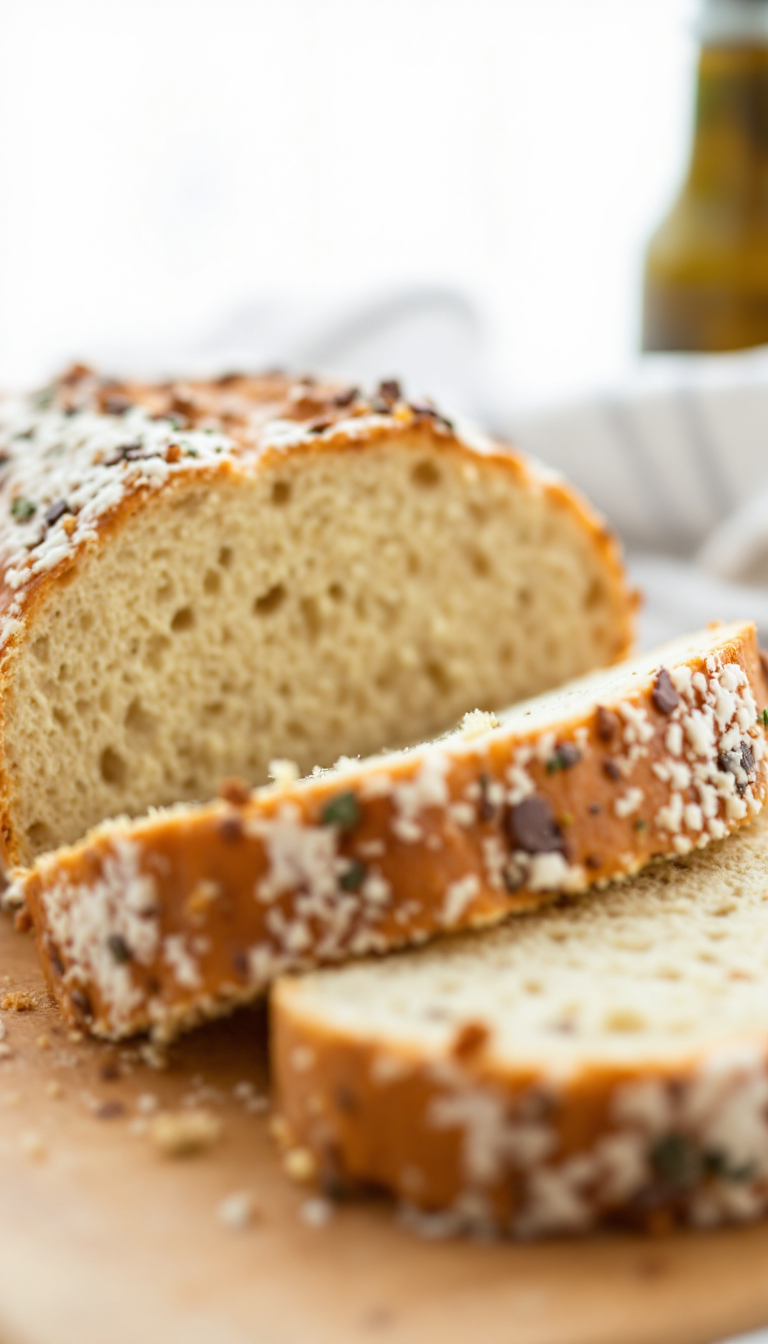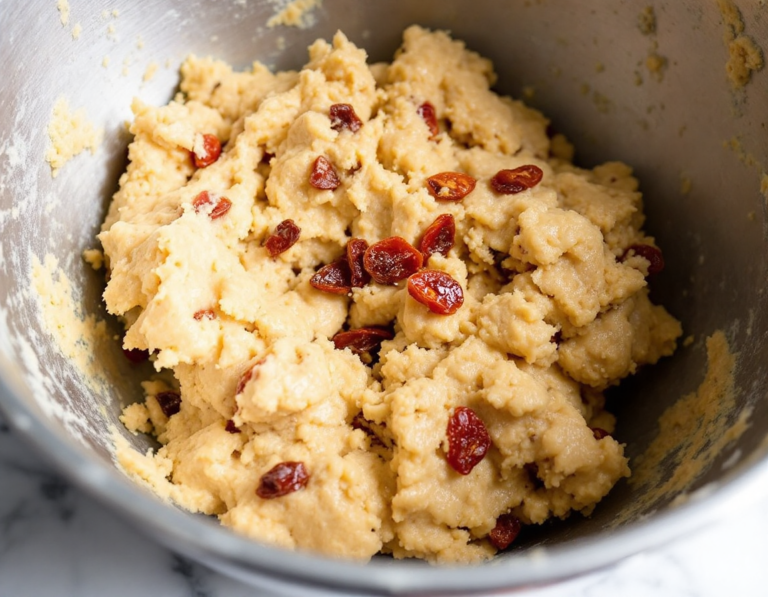
So, tomatoes and basil, right? They’re like the dream team of flavors—Italy’s finest! Imagine a warm loaf, fresh from the oven, with that crispy crust just begging to be torn open.
It’s like a hug from your kitchen (or maybe a high-five)! Plus, no kneading, which is practically a miracle for those of us who’d rather watch dough rise than wrestle with it.
Steps
- Chop the sun-dried tomatoes into small pieces. In a large bowl, mix the flour, yeast, salt, dried basil, and chopped tomatoes until well combined, then stir in the optional shredded mozzarella.
- Dissolve the tomato paste in warm water. Pour this mixture into the flour blend and stir until a sticky dough forms. Adjust the water as needed to achieve a wet but not glossy dough, ensuring no dry flour remains.
- Cover the bowl loosely and let the dough rise for one hour, or until it doubles in size. Once risen, sprinkle flour on the dough, scrape it from the bowl’s sides, and turn it out onto a floured surface.
- Fold the dough over itself 5-6 times until it appears smooth, then place it on parchment paper and let it rise for another 30 minutes. Meanwhile, preheat a Dutch oven in the oven to 425ºF.
- Carefully remove the preheated Dutch oven, lift the dough with the parchment paper into it, cover with the lid, and bake for 30 minutes. Remove the lid and bake for an additional 15-20 minutes until the crust is golden brown.
- Take the bread out of the oven, lift it from the Dutch oven using the parchment paper, and let it cool before slicing. Enjoy your homemade bread with soups or stews.

Ingredients
- 1/3 cup sun-dried tomatoes, chopped
- 3 cups all-purpose flour
- 2 teaspoons instant or bread machine yeast
- 1/2 tablespoon salt
- 1/2 tablespoon dried basil
- 1.5 cups warm water
- 1 tablespoon tomato paste
- 4 ounces mozzarella, shredded (optional)
Nutritional Values
Calories: 1896 kcal | Carbohydrates: 324 g | Protein: 56 g | Fat: 32 g | Sodium: 4456 mg | Fiber: 9 g
FAQ
- Can I freeze the Tomato Basil No Knead Bread?
- Yes, this bread can be frozen successfully. Once it has completely cooled, slice it in half and place one half in a freezer bag. It will thaw quickly at room temperature when you’re ready to enjoy it again.
- What’s the difference between a 2-hour rise and a 12-hour rise?
- A quick rise takes about 2 hours, whereas a long ferment can take 12-18 hours. The long ferment enhances the bread’s flavor, but you’ll need to reduce the yeast to 1/4 teaspoon to prevent over-yeasting during the extended period.
- Why is a Dutch oven recommended for baking this bread?
- A Dutch oven is ideal because it traps steam, which helps develop a crispy, crackling crust. Without a Dutch oven, the bread may spread more and the crust texture might vary slightly.
- Can I use oil-packed sun-dried tomatoes instead of dry-packed?
- It’s recommended to use dry-packed sun-dried tomatoes for this recipe as they integrate better into the dough without adding extra oil, which could affect the dough’s consistency.
- Is the mozzarella cheese necessary in the recipe?
- The shredded mozzarella is optional. It melts into the bread and doesn’t significantly alter the final taste or texture, so you can omit it if desired.
Tips
- Freezing for Later: If you can’t finish the large loaf within a few days, slice it in half after it has cooled, place one half in a freezer bag, and store it in the freezer. This bread freezes well and can be quickly thawed at room temperature whenever you need it.
- Adjusting Rise Time: For a more robust flavor, you can opt for a long dough ferment of 12-18 hours instead of the quick 2-hour rise. Just reduce the yeast to 1/4 teaspoon to accommodate the extended fermentation time, allowing the yeast to multiply naturally.
- Dutch Oven Benefits: Baking the bread in a Dutch oven is recommended for the best results, as it traps steam, creating a beautifully crispy crust. If you don’t have a Dutch oven, you can use a baking sheet, but note that the bread may spread more outward and the crust texture will differ.
- Optimal Dough Consistency: Aim for a dough that is wet and sticky but not glossy or slimy. This ensures the dough is easy to handle and rises properly without any dry flour left at the bottom of the bowl. Adjust the water content as needed based on the dough’s texture.
Equipment
- Cast Iron Dutch Oven – Essential for achieving the best crust texture by trapping steam during baking.
- Parchment Paper – Used to transfer the dough into the Dutch oven and prevent sticking.
